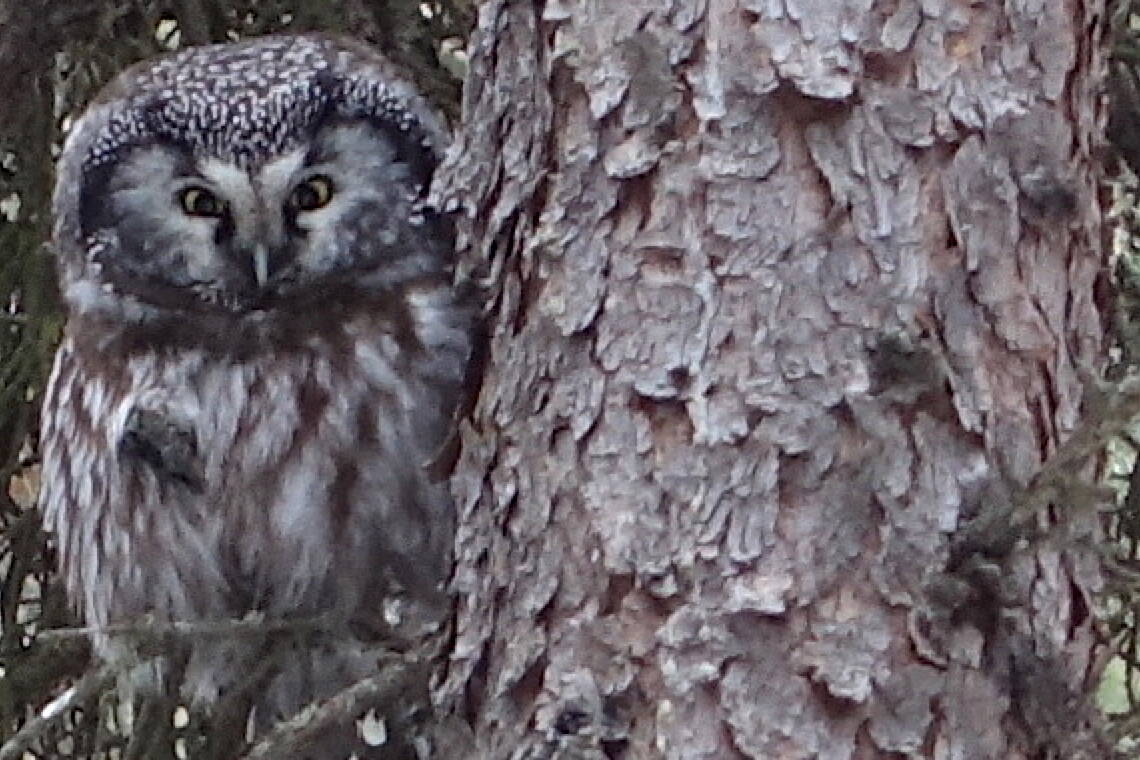On these March nights, a male boreal owl has been singing from a wooden owl box near our home. The late biologist Dave Klein attached the nest box to a black spruce tree north of the University of Alaska Fairbanks ski trails many years ago.
In search of a mate, the owl sings his haunting little song almost constantly for all hours of darkness now at the spring equinox. Soon, there will be more daylight than darkness.
Over much of their range, boreal owls operate in the dark every night. They live south to Colorado and in a forested belt around the northern part of the globe.
People know boreal owls in Europe and Russia as the Tengmalm’s owl. Here in Alaska, biologist Tim Craig found boreal owls in his nest boxes north of Coldfoot along the Dalton Highway, almost to where there are no trees. But — fun fact — he found none in his string of boxes just south of Coldfoot on the highway.
In the far north, where night will soon be in short supply, nocturnal animals like flying squirrels and owls need to go about their business in daylight.
“None of these animals out there are sacked out for eight hours like we are,” said UAF ecologist Knut Kielland, who studies lynx and hares, among other creatures.
Mad increases in daylight cue chemical changes in the brain that enable animals to ditch their circadian rhythms, Kielland said. Moose, for example, can strip willows for two hours then lie down for a few hours, repeating that cycle all day and all night. Though owls, bats and flying squirrels are more active in the dimmest part of the day, they are not living the life in Alaska that they are in Washington state.
During studies in the early 2000s, biologist Jack Whitman found that boreal owls outside McGrath and Fairbanks fed mostly red-backed voles to their nestlings, sometimes switching to meadow voles when they were available and grasses and sedges were short. Owls fed their young other birds, mammals and insects too, but voles were by far the number one prey of Aegolius funereus.
About that Latin name: the genus name Aegolius is a type of screech owl thought to be a bird of ill omen. Funereus means dark, deathlike, funereal. It is also the name of a death metal band from New Jersey. Seems a bit heavy for one of the friendlier-looking owls out there.
The boreal owl’s roundish face is disk-shaped, like a radar antenna bouncing the slightest rustle of twigs to the owl’s ears. The boreal owl is one of few creatures with a lopsided skull — one ear is lower than the other. This asymmetrical head further helps a boreal owl pinpoint the skitter of a vole through leaves.
We hope our resident boreal owl’s song attracts a mate soon, and the female lays her eggs in Dave Klein’s box. Then we can watch the male return with voles he slam-dunks into the hole for the female, and later the chicks.
The latter may soon be poking their dark heads out of that hole, blinking at their first views of the boreal forest.
• Since the late 1970s, the University of Alaska Fairbanks’ Geophysical Institute has provided this column free in cooperation with the UAF research community. Ned Rozell ned.rozell@alaska.edu is a science writer for the Geophysical Institute. Portions of this story ran in 2018.

